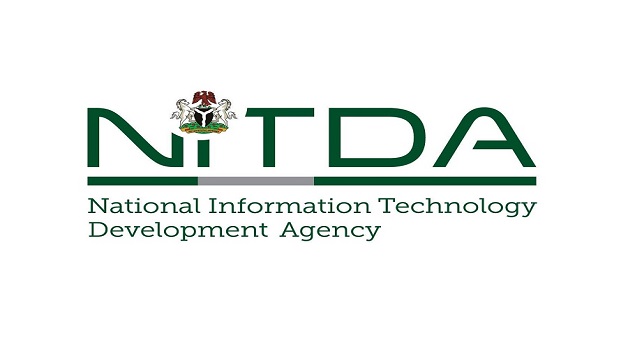E-Business
SophosLabs 2018 Malware Forecast Shows No Platform Immune from Ransomware

By peter oluka
Sophos, a global leader in network and endpoint security, today announced its SophosLabs 2018 Malware Forecast, a report that recaps ransomware and other cybersecurity trends based on data collected from Sophos customer computers worldwide during April 1 to Oct. 3, 2017.
One key finding shows that while ransomware predominately attacked Windows systems in the last six months, Android, Linux and MacOS platforms were not immune.
“Ransomware has become platform-agnostic. Ransomware mostly targets Windows computers, but this year, SophosLabs saw an increased amount of crypto-attacks on different devices and operating systems used by our customers worldwide,” said Dorka Palotay, SophosLabs security researcher and contributor to the ransomware analysis in the SophosLabs 2018 Malware Forecast.
The report also tracks ransomware growth patterns, indicating that WannaCry, unleashed in May 2017, was the number one ransomware intercepted from customer computers, dethroning longtime ransomware leader Cerber, which first appeared in early 2016. WannaCry accounted for 45.3 percent of all ransomware tracked through SophosLabs with Cerber accounting for 44.2 percent.
“For the first time we saw ransomware with worm-like characteristics, which contributed to the rapid expansion of WannaCry. This ransomware took advantage of a known Windows vulnerability to infect and spread to computers, making it hard to control,” said Palotay. “Even though our customers are protected against it and WannaCry has tapered off, we still see the threat because of its inherent nature to keep scanning and attacking computers. We’re expecting cyber criminals to build upon this ability to replicate seen in WannaCry and NotPetya, and this is already evident with Bad Rabbit ransomware, which shows many similarities to NotPetya.”
The SophosLabs 2018 Malware Forecast reports on the acute rise and fall of NotPetya, ransomware that wreaked havoc in June 2017.
NotPetya was initially distributed through a Ukranian accounting software package, limiting its geographic impact. It was able to spread via the EternalBlue exploit, just like WannaCry, but because WannaCry had already infected most exposed machines there were few left unpatched and vulnerable.
The motive behind NotPetya is still unclear because there were many missteps, cracks and faults with this attack. For instance, the email account that victims needed to contact attackers didn’t work and victims could not decrypt and recover their data, according to Palotay.
“NotPetya spiked fast and furiously, and did hurt businesses because it permanently destroyed data on the computers it hit. Luckily, NotPetya stopped almost as fast as it started,” said Palotay. “We suspect the cyber criminals were experimenting or their goal was not ransomware, but something more destructive like a data wiper. Regardless of intention, Sophos strongly advises against paying for ransomware and recommends best practices instead, including backing up data and keeping patches up to date.”
Cerber, sold as a ransomware kit on the Dark Web, remains a dangerous threat. The creators of Cerber continuously update the code and they charge a percentage of the ransom that the “middle-men” attackers receive from victims. Regular new features make Cerber not only an effective attack tool, but perennially available to cyber criminals. “This Dark Web business model is unfortunately working and similar to a legitimate company is likely funding the ongoing development of Cerber. We can assume the profits are motivating the authors to maintain the code,” said Palotay.
Android ransomware is also attracting cyber criminals. According to SophosLabs analysis, the number of attacks on Sophos customers using Android devices increased almost every month in 2017.
“In September alone, 30.4 percent of malicious Android malware processed by SophosLabs was ransomware. We’re expecting this to jump to approximately 45 percent in October,” said Rowland Yu, a SophosLabs security researcher and contributor to the SophosLabs 2018 Malware Forecast. “One reason we believe ransomware on Android is taking off is because it’s an easy way for cyber criminals to make money instead of stealing contacts and SMS, popping ups ads or bank phishing which requires sophisticated hacking techniques. It’s important to note that Android ransomware is mainly discovered in non-Google Play markets – another reason for users to be very cautious about where and what kinds of apps they download.”
The SophosLabs report further indicates two types of Android attack methods emerged: locking the phone without encrypting data, and locking the phone while encrypting the data. Most ransomware on Android doesn’t encrypt user data, but the sheer act of locking a screen in exchange for money is enough to cause people grief, especially considering how many times in a single day information is accessed on a personal device. “Sophos recommends backing up phones on a regular schedule, similar to a computer, to preserve data and avoid paying ransom just to regain access. We expect ransomware for Android to continue to increase and dominate as the leading type of malware on this mobile platform in the coming year,” said Yu.
E-Business
Nigeria Strengthens Cybersecurity, Launches National Cleanup Plan

Nigerian government, through the Office of the National Security Adviser (ONSA) and the National Information Technology Development Agency (NITDA), has announced a strategic collaboration to strengthen cybersecurity and clean up the nation’s cyberspace.

Recognizing that cybercrime knows no borders, Nigeria also reaffirmed its commitment to fostering stronger global partnerships within the cybersecurity ecosystem.
This announcement was made during a press conference before the inaugural National Cybersecurity Conference, which is scheduled to take place in Abuja from July 9th to 11th, 2025.
Sa’ad Abubakar, national cybersecurity coordinator from the Office of National Security Advisor, said fighting cybercrime must take the whole of society and the whole of the government approach.
According to him, “Apart from the deterrent approach whereby government agencies such as Economic and Financial Crimes Commission (EFCC) arrest individuals, take them to court and prosecute them, the youth can be nurtured into better citizens who can showcase their capacity in better ways and be useful to the country.”
Similarly, Kashifu Abdullahi, director-general, NITDA, also stressed the need for collaborative efforts in fighting cybercrimes.
According to him “Then, in addition to that, we also want to build a stronger global collaboration with the global cyber security ecosystem, because when you look at cybercrime in general, it doesn’t respect the borders.
“Someone can commit a crime from Ghana using a Nigerian ID in the US. So you can look at him physically in a different jurisdiction, pretending to be in another jurisdiction, committing the crime in another jurisdiction.
“So without that kind of synergy and working together, it will be difficult to address these challenges. The third one is challenge. The third one is getting an alternative to cybercrime for our kids in Nigeria. We have this as a major challenge.”
Inuwa further highlighted the upcoming conference’s importance, noting that it would tackle key issues through workshops, discussions on emerging threats, cross-border cybersecurity collaboration strategies, and training programmes.
He also announced that the National Cybersecurity Conference 2025 would feature the Cybersecurity Excellence Awards, recognising top contributions in the field.
The DG extended an invitation to global partners to collaborate with Nigeria in building a safer digital future.
The press conference was attended by notable figures, including Ahmad Sa’ad Abubakar, National Coordinator of, the National Cybersecurity Coordination Centre (NCCC); Hanniel Jafar, Representative of the President, of Cyber Security Experts Association of Nigeria (CSEAN); Ankit Shukla, Managing Director, QNA Marketing Management LLC and members of the press and other stakeholders.
E-Business
AXIAN Telecom Invests in Jumia Post-MTN Era

XIAN Telecom has acquired an 8% stake in pan-African e-commerce company Jumia Technologies, citing the platform’s fintech and logistics strengths as key drivers of its backing.

This marks the first major telecom investment in Jumia since MTN Group’s exit in 2020.
AXIAN, a fast-growing telecom and digital services provider with operations across Africa, disclosed the purchase in a Schedule 13D filing with the U.S. Securities and Exchange Commission.
While the financial terms were not disclosed, AXIAN Telecom CEO, Hassan Jaber, described the move as a strategic alignment with Jumia’s growth trajectory and digital ecosystem.
“Jumia’s achievements in digital retail and fintech, particularly through JumiaPay and its logistics network, make it a very attractive investment for us. We believe in Jumia’s potential to promote financial and economic inclusion, which aligns with our core values,” said Jaber.
Once dubbed the “Amazon of Africa,” Jumia became the first African-founded tech company to list on the New York Stock Exchange in 2019.
But years of underperformance, leadership changes, and competitive pressures dented investor confidence.
In October 2020, South Africa’s MTN Group offloaded its 18.9% stake for $138 million, well below the $698 million value it once held post-IPO.
Since then, Jumia has undergone a significant transformation. Under CEO Francis Dufay, appointed in 2022, the company exited low-performing markets like South Africa and Tunisia, cut costs, and doubled down on core markets – Nigeria, Kenya, Egypt, and Morocco.
The firm is now focused on high-growth verticals, including everyday essentials and digital financial services.
Jumia’s regional CEO for East Africa, Vinod Goel, recently revealed plans to scale up international brand offerings and open its logistics network to third-party businesses.
Jaber underscored that AXIAN Telecom’s investment signals renewed confidence in Jumia’s long-term potential.
The telecom firm’s CEO said the company views Jumia as a key player in advancing Africa’s digital economy, aligning with AXIAN’s mission through its fintech and digital infrastructure brands such as Yas and Mixx by Yas.
E-Business
NIMC Plans to Register 95 Percent Nigerians by December

Abisoye Coker-Odusote, director general, National Identity management commission (NIMC) has said that the commission is set to register 95 percent of Nigerians into the National Identity Database before December 2025.

Abisoye Coker-Odusote,, DG, NIMC
She made this statement at a press briefing to highlight the commissions goal aligns with President Bola Tinubu’s Renewed Hope Agenda, particularly on digital governance and inclusive development.
The mass enrollment drive will be powered by a combination of improved infrastructure, expanded registration centres, and robust public sensitization campaigns.
As of May 2025, NIMC reports over 120 million Nigerians have been enrolled, and about 100 million more would be captured by December.

 E-Business2 days ago
E-Business2 days agoNIMC Plans to Register 95 Percent Nigerians by December

 News2 days ago
News2 days agoJAMB Waxes Worriedly over Rising Digital Exam Fraud

 Telecom2 days ago
Telecom2 days ago9mobile Nigeria Inks Agreement to Roam with MTN

 Telecom2 days ago
Telecom2 days agoIHS Nigeria Moves to Enhance G4S Secure Solutions Site Patrols and Increase Operational Efficiency with Patrol Vehicles

 Telecom2 days ago
Telecom2 days agoBanks, Telcos to Start Deducting USSD Charges from Airtime Today

 E-Business1 day ago
E-Business1 day agoAXIAN Telecom Invests in Jumia Post-MTN Era
- E-Financial1 day ago
UBA Compiles with NCC, to Deduct USSD from Customers’ Accounts

 E-Financial2 days ago
E-Financial2 days agoFitch Upgrades Fidelity Bank’s National Rating to ‘A+(nga)’, Affirms Long-Term IDR at ‘B’
















